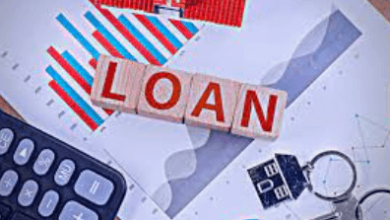Construction To Permanent Loan

Construction to permanent loans are a popular financing option for individuals looking to build their dream homes. This type of loan combines both the construction phase and the permanent mortgage into one seamless process, providing borrowers with convenience and efficiency. Understanding the basics of construction to permanent loans, including their benefits, eligibility requirements, and finding the right lender, is crucial in ensuring a successful borrowing experience.
Construction to permanent loan offer several advantages over traditional construction loans. By combining both phases into one loan, borrowers save time and money on closing costs and avoid the hassle of refinancing once the construction is complete.
Additionally, these loans provide borrowers with flexibility in terms of interest rates by allowing them to lock in a rate at the beginning of the project. This can be particularly beneficial if interest rates are expected to rise during the construction period.
Overall, construction to permanent loans provide borrowers with a streamlined financing solution that simplifies the home building process while offering financial stability for long-term homeownership.
Understanding the Basics of Construction to Permanent Loans
Construction to permanent loans are a financial arrangement in which the borrower secures funding for both the construction phase and future mortgage of a property, enabling a seamless transition from construction to long-term homeownership. These loans provide an efficient and convenient solution for individuals or businesses looking to build their own homes or commercial properties.
During the construction process, the borrower receives disbursements from the lender based on predetermined milestones, ensuring that funds are available as needed to cover expenses such as materials and labor costs. This allows for greater control and management of the construction project.
Additionally, loan terms for construction to permanent loans typically include options such as fixed interest rates, adjustable interest rates, or even interest-only payments during the construction phase. This flexibility provides borrowers with choices that align with their financial goals and preferences.
By understanding the basics of construction to permanent loans and leveraging their benefits, individuals can embark on their dream projects while securing long-term financing solutions tailored to their needs.
Benefits of a Construction to Permanent Loan
One advantage of a construction to permanent financing option is that it provides borrowers with the convenience of combining both the building and mortgage processes into one seamless transaction.
This means that borrowers do not have to go through the hassle of applying for a separate construction loan and then later on refinancing into a permanent mortgage. Instead, they can secure both loans at once, saving time and effort.
Additionally, by opting for a construction to permanent loan, borrowers can lock in their mortgage rates upfront, providing them with peace of mind even if interest rates rise during the construction timeline. This eliminates the uncertainty associated with fluctuating rates and allows borrowers to budget effectively for their future mortgage payments.
Overall, a construction to permanent loan offers convenience and stability to borrowers looking to build their dream home while minimizing potential financial risks.
Eligibility and Requirements for a Construction to Permanent Loan
This paragraph will discuss the eligibility and requirements for a construction to permanent loan, focusing on three key points:
- Credit score and financial history
- Construction plans and budget
- Collateral and down payment
To be eligible for a construction to permanent loan, borrowers typically need a solid credit score and a positive financial history.
Lenders will also require detailed construction plans and an accurate budget to ensure that the project is feasible.
Additionally, borrowers may be required to provide collateral and make a significant down payment as part of the loan requirements. Read more
Credit Score and Financial History
Furthermore, an individual’s credit score and financial history play a crucial role in determining their eligibility for a construction to permanent loan.
Lenders assess the creditworthiness of borrowers by evaluating their credit score impact and financial history. A high credit score indicates responsible borrowing habits and demonstrates the ability to manage debt effectively. This is important because construction to permanent loans are long-term commitments that require regular payments over an extended period. Lenders want assurance that borrowers have the financial means to repay the loan on time.
Additionally, lenders examine the borrower’s financial history, including income stability, employment records, and existing debts. They consider factors such as debt-to-income ratio and any outstanding liens or bankruptcies. These assessments help lenders gauge the borrower’s repayment capability and determine whether they pose a low risk of defaulting on the loan.
Therefore, maintaining a good credit score and having a solid financial history are crucial factors when seeking approval for a construction to permanent loan.
Construction Plans and Budget
Additionally, the development of detailed construction plans and a well-defined budget is essential for securing funding for a building project. A construction timeline serves as a roadmap, outlining the various stages of the project from start to finish. It allows lenders to assess the feasibility of the project and evaluate potential risks. Furthermore, having a clear understanding of the estimated costs associated with each phase helps in effective cost management. This includes not only material and labor expenses but also permits, inspections, and other miscellaneous fees that may arise during construction. By presenting a comprehensive and accurate budget plan, borrowers demonstrate their commitment to responsible financial management, which instills confidence in lenders and increases the likelihood of loan approval. To provide further clarity on anticipated costs, it is beneficial to include contingency funds within the budget to account for any unforeseen circumstances or changes in scope that may arise during construction. Overall, meticulous attention to detail when developing construction plans and budgets is crucial as it ensures transparency, facilitates smooth progress throughout the project’s lifecycle, and ultimately contributes to successful funding acquisition for building projects.
Collateral and Down Payment
To ensure the successful acquisition of funding for a building project, it is imperative to provide adequate collateral and make a substantial down payment.
Collateral evaluation plays a crucial role in assessing the value of assets that can be used as security against the loan. Lenders typically evaluate collateral based on its market value, liquidity, and potential for depreciation. This evaluation helps them determine the amount of risk associated with the loan and allows them to protect their interests in case of default.
Additionally, making a significant down payment demonstrates the borrower’s commitment and financial stability. It reduces the lender’s risk by decreasing the loan-to-value ratio and provides an initial equity stake in the construction project. Down payment options vary depending on factors such as creditworthiness, loan program guidelines, and personal financial circumstances.
By carefully considering collateral options and making a substantial down payment, borrowers increase their chances of securing favorable terms for their construction to permanent loans while minimizing risks for both parties involved.
Finding the Right Lender for Your Construction to Permanent Loan
Selecting the appropriate lender for your construction to permanent loan is crucial in ensuring a successful and seamless financing process. Finding a reputable lender is the first step in this process, as it ensures that you are working with a trusted institution that has experience in providing construction to permanent loans.
When comparing loan terms and interest rates, it is important to consider factors such as the length of the loan, any potential fees or penalties, and the overall cost of borrowing. Additionally, looking into customer reviews and testimonials can provide insight into previous customers’ experiences with the lender.
By carefully considering these factors and finding a reputable lender who offers favorable loan terms and interest rates, you can make an informed decision that aligns with your financial goals while also ensuring a smooth construction to permanent loan process.
The Construction Phase: Managing Costs and Timeline
In the construction phase of a project, there are several key points to consider.
First, hiring a contractor is crucial as they will oversee the entire construction process and ensure that it meets all necessary requirements.
Additionally, obtaining necessary permits and inspections is essential in order to comply with local regulations and ensure the safety of the project.
Lastly, managing construction expenses requires careful planning and monitoring to stay within budget and avoid any unexpected costs or delays. Read more
Overall, these factors play a significant role in successfully completing the construction phase of a project.
Hiring a Contractor
Contracting a skilled and experienced contractor is crucial when embarking on a construction to permanent loan project, as their expertise ensures the successful completion of the venture within the agreed-upon timeframe and budget.
When selecting a contractor, it is important to thoroughly evaluate their qualifications, reputation, and track record in similar projects.
Additionally, engaging in contract negotiation is essential to establish clear expectations regarding deliverables, timelines, payment terms, and any potential change orders that may arise during the construction phase.
A reliable contractor will possess strong communication skills to effectively manage subcontractors and address any issues or concerns that may arise throughout the project.
By carefully selecting and negotiating with a competent contractor, borrowers can increase the likelihood of a smooth construction process while minimizing unexpected delays or cost overruns.
Obtaining necessary permits and inspections
To ensure compliance with local regulations and building codes, it is necessary to obtain the required permits and schedule inspections throughout the construction process.
Obtaining permits is a crucial step in any construction project as it ensures that the proposed plans meet all legal requirements and safety standards. These permits are typically obtained from the local government or relevant regulatory authorities, and they specify what type of construction work can be done, where it can be done, and how it should be carried out.
The inspection process plays an equally important role as it involves regular visits by inspectors to assess the progress of the construction work and verify if it adheres to the approved plans and codes. Inspectors examine various aspects such as structural integrity, electrical systems, plumbing installations, fire safety measures, and more. Read more
This meticulous inspection process helps guarantee that the construction project meets all necessary standards for quality and safety. By diligently obtaining permits and scheduling inspections throughout the construction process, homeowners can have peace of mind knowing that their project complies with local regulations while ensuring a safe living environment for themselves and others.
Managing construction expenses
One important aspect of overseeing a construction project involves effectively managing the financial resources allocated to various expenses. This includes managing construction delays and implementing cost-saving strategies. Construction delays can occur due to a variety of reasons, such as weather conditions, material shortages, or unexpected issues that arise during the construction process. To manage these delays effectively, it is crucial to have a contingency plan in place and allocate sufficient funds for potential extra costs. Additionally, implementing cost-saving strategies can help optimize the use of financial resources. These strategies may include negotiating better prices with suppliers, utilizing efficient construction methods, or exploring alternative materials that are more affordable without compromising quality. By carefully managing both construction delays and expenses, project managers can ensure that the allocated financial resources are utilized efficiently and effectively throughout the entire construction process.
Transitioning to the Permanent Mortgage
During the transition to the permanent mortgage, careful consideration must be given to ensure a smooth and seamless conversion from the construction phase to a long-term financing solution.
This process involves managing construction delays and selecting the right construction materials.
Managing construction delays requires effective communication between all parties involved, including contractors, architects, and lenders. It is crucial to have contingency plans in place to mitigate any potential setbacks and ensure that the project stays on track.
Additionally, selecting the right construction materials is essential for both the short-term construction phase and the long-term durability of the property. This involves evaluating factors such as cost-effectiveness, sustainability, and functionality to make informed decisions that will benefit both current needs and future occupants.
By carefully navigating these considerations during the transition period, borrowers can successfully secure a permanent mortgage that aligns with their financial goals while ensuring a high-quality finished product.
Tips for a Successful Construction to Permanent Loan Experience
Effective planning and careful consideration of various factors contribute to a smooth and successful transition from the construction phase to a long-term financing solution, ensuring a seamless experience for borrowers.
When managing construction risks, it is crucial to select a construction to permanent loan lender that has expertise in this specialized area.
Here are some tips for selecting the right lender:
1) Look for lenders with experience in construction lending who understand the unique challenges and requirements of this type of loan.
2) Consider their track record in successfully funding similar projects and their ability to provide timely disbursements throughout the construction process.
3) Evaluate their loan terms, interest rates, and fees, ensuring they align with your financial goals and preferences. Read more
Additionally, engaging with an experienced lender can provide valuable insights into navigating potential pitfalls during the transition period, further enhancing the overall success of your construction to permanent loan experience.
Frequently Asked Questions
What are the potential drawbacks or risks associated with a construction to permanent loan?
Potential drawbacks and risks of a construction to permanent loan include cost overruns and delays during the construction phase, difficulties in qualifying for the loan based on the builder or contractor’s experience, and potential issues with the appraisal process for renovations or additions to an existing property.
Can a construction to permanent loan be used for renovations or additions to an existing property?
Renovation financing offers various financing options for homeowners looking to make additions or improvements to their existing property. These options provide a means of funding the renovation project without the need for a construction to permanent loan.
Are there any specific qualifications or experience required for the builder or contractor involved in the construction project?
For a successful construction project, it is essential for the builder or contractor to possess qualifications and experience. These factors ensure that the individual has the necessary skills and knowledge to carry out the project effectively and efficiently.
How does the appraisal process work for a construction to permanent loan?
The appraisal process for a loan involves an evaluation of the property’s value to determine if it meets the loan requirements. This assessment considers factors such as market trends, comparable properties, and the condition and features of the property being appraised.
What happens if there are cost overruns or delays during the construction phase of the project?
During the construction phase of a project, cost overrun mitigation and effective construction phase management are crucial. Strategies such as proper budgeting, regular monitoring, and clear communication can help address any potential cost overruns or delays that may arise.
Conclusion
In conclusion, construction to permanent loans offer a convenient and efficient financing option for individuals looking to build their dream home. By combining the construction loan and permanent mortgage into one loan, borrowers can save time and money while enjoying a streamlined application process.
These loans typically come with competitive interest rates and flexible repayment terms, making them accessible to a wide range of borrowers.
To be eligible for a construction to permanent loan, borrowers must meet certain requirements such as having a solid credit history, sufficient income, and a detailed construction plan. It is important to carefully research and compare lenders to find the right one that offers favorable terms and conditions.
During the construction phase, it is crucial to closely manage costs and adhere to the timeline in order to avoid delays or cost overruns.
Once the construction is complete, borrowers will transition seamlessly into the permanent mortgage phase without having to go through another round of applications or paperwork. This simplifies the financing process and allows homeowners to focus on settling into their new home.
Overall, a successful construction to permanent loan experience requires careful planning, attention to detail, and working with knowledgeable professionals who can guide borrowers through every step of the process. Read more



